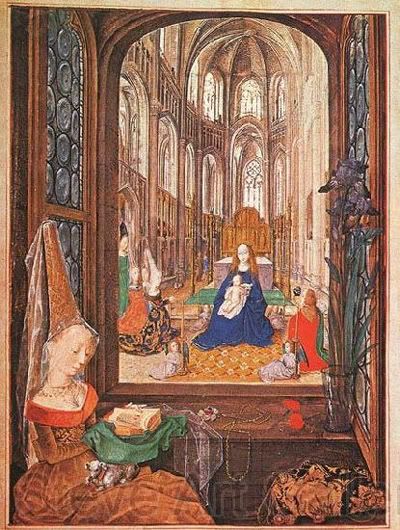
Detail from Presentation of Christ at the Temple by Hans Holbein the Elder, 1500-1501
Princess Hats aka henin appeared in the mid to late fifteenth century, when height began to replace width as the dominant feature of womens headwear. Henin were a continental trend, originating in Burgundy, and it is unlikely that they were ever worn in England. The henin appeared during the period when the gothic style still dominated architecture, and may be a reflection of the tall spires reaching towards heaven.

Chartres Cathedral.
The henin was worn with a veil called a cointoise, which was either attached to the point of the cone or swathed around it. The cointoise could vary in length, reaching anywhere from the shoulders to the hemline of the dress. It's not exactly clear how a henin stayed on a womans head. They feature a small v-shaped loop in front, called a frontlet, which may provide some anchorage. Others have suggested that a small bit of glue was put on the frontlet to attach it to the forehead. An extremely high hairline was considered beautiful in this period, and the henin allowed women to show off their prominent foreheads.

Image from Mary of Burgundy's Book of Hours, 1467-1480.
Naturally the henin took a great amount of abuse. Pierre de Gros said in Le Jardin des Nobles that "the younger and more beauitufl the ladies were, the higher were the chimneys that they carried."